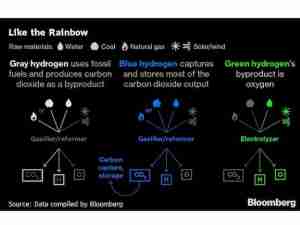Despite supply outages in Norway and the US, natural gas and LNG prices are down 2-3% on the week due to weak demand in Europe and Asia.
In Europe, Title Transfer Facility (TTF) prices for March delivery fell 3.3% week-on-week to approximately $9 per million British thermal units (MMBtu) on 6 February, with Asian spot LNG prices down to $9.2 per MMBtu, erasing last week’s gains (week 5).
Europe
Underground gas storage facilities in Europe are presently 68.6% full, lower by 3.8% to around 79 billion cubic meters (Bcm).
Average withdrawals from storage fell 7.4% on the week to approximately 500 million cubic meters per day (MMcmd), compared to 590 MMcmd in the same period last year.
LNG for delivery into Europe was trading 5.1% lower at approximately $8.35 per MMBtu on 6 February.
Saying that, LNG imports remain robust, with Europe importing 11.93 million tonnes (Mt) so far in 2024, compared to 12.04 Mt in 2022 and 11.84 Mt in 2023.

In Norway, gas production has dipped due to ongoing outages at the Nyhamna gas treatment plant following an external power supply failure, compressor failure at Troll, and planned maintenance at Johan Sverdrup from 27 January to 9 February.
As of 5 February, total pipeline flows from Norway into Europe were 16.7% down on the week to 286 MMcmd.
Flows into Europe from Russia were up 3% week-on-week to approximately 87.7 MMcmd as of 4 February.
Asia
Asian spot LNG prices for March 2024 delivery fell 0.3% on the week, with derivatives for April delivery trading 2.8% lower at around $9.4 per MMBtu on 6 February.
Fundamentals remain weak in Asia, with buying interest limited to southern Asian countries.
India’s Gujarat State Petroleum Corporation issued a tender for volumes from 19-23 March but ended up not awarding it after receiving offers below $10 per MMBtu.
GAIL awarded a swap tender for 24 cargoes from Sabine Pass in the US for delivery to India’s Dabhol and Dahej terminals.
On 4 February, Bangladesh purchased three March delivery cargoes priced at under $10 per MMBtu via a buy-tender, while Thailand’s PTT is seeking a cargo for 12-13 March delivery.
Elsewhere, LNG buying interest from Japanese, South Korean and Chinese utilities remains limited due to comfortable inventory levels and the approaching Lunar New Year holiday (10-18 February).
Japan will likely face above-average temperatures until 21 February, except on 12 February, with South Korea forecasting above-average temperatures except on 11 February.
In China, Beijing is expecting above-average temperatures until 20 February, with Shanghai likely to see below-average temperatures until 11 February, followed by above-average temperatures from 13 February.
Major Japanese power utilities reported combined gas storage levels of 2.29 Mt on 4 February.
This is up 6% week-on-week and 11% higher than the five-year average from 2018-22 for the end of January, but 4.2% lower than the 2.39 Mt reported at the end of January 2023.
Hokuriku Electric’s Nanao-Ota coal-fired power plant Unit 1 (500-megawatts (MW)) and Unit 2 (700-MW) remain offline as of 6 February.
The power plants have now been offline for 36 days since initially shutting down due to an earthquake on 1 January.
Approximately two LNG shipments per month would be required if gas-fired power generation was to compensate for any prolonged outage.
In central Japan, Jera’s 1.07 gigawatt (GW) coal-fired Taketoyo power plant Unit 5 remains offline without an announced restart date as of 6 February.
Jera’s 600-MW Joetsu gas-fired power plant also went offline on 6 February, with no announced restart date.
However, excess generation from other power plants should be sufficient for generation in the region.
Currently, 10 nuclear power plants run by three Japanese power utilities are operating normally, with around 8.5 GW of available capacity, 27% higher compared to the 6.7 GW of available capacity in February 2023.
One nuclear power plant with approximately 0.8 GW of nameplate capacity can save consumption of approximately two shipments worth of LNG per month.
US
Henry Hub prices for February delivery expired on 5 February at $2.49 per MMBtu, with the prompt-month contract for March rolled over closer to $2 per MMBtu on 6-7 February.
The market continues to experience volatility due to the oversupply situation and a lack of demand upside catalysts.
Our estimate for February's US dry gas production is that it will average 103.7 billion cubic feet per day (Bcfd), up 0.59% month-on-month, as production is expected to recover following Winter Storm Heather in mid-January.
Temperatures have been mild in the early days of February, indicating domestic consumption is likely to remain tepid.
However, the 15-day forecast picked up three heating degree days (HDDs) recently, which provides some bullish sentiment.
Combined, US LNG exports from week 1-5 in 2024 have remained high compared to previous years (Figure 2).
US feedgas demand as of 4 February declined to 13.3 Bcfd, primarily driven by lower volumes to Corpus Christi and Freeport.
Corpus Christi LNG has also experienced lower feedgas supply in recent days, though the cause is uncertain.
The facility’s feedgas levels were approximately 1.57 Bcfd on 2 February, 1.74 Bcfd on 3 February, and 1.28 Bcfd on 4 February, compared to around 2 Bcfd a week earlier, due to one of its 4.5 million tonnes per annum (Mtpa) trains ramping down on 1 February.
As previously reported, the month-long outage at one of Freeport’s 5 Mtpa trains is also likely to limit the supply of US LNG.










_-_28de80_-_58820516bd428ab3fd376933932d068c43db9a4a_lqip.jpg)




